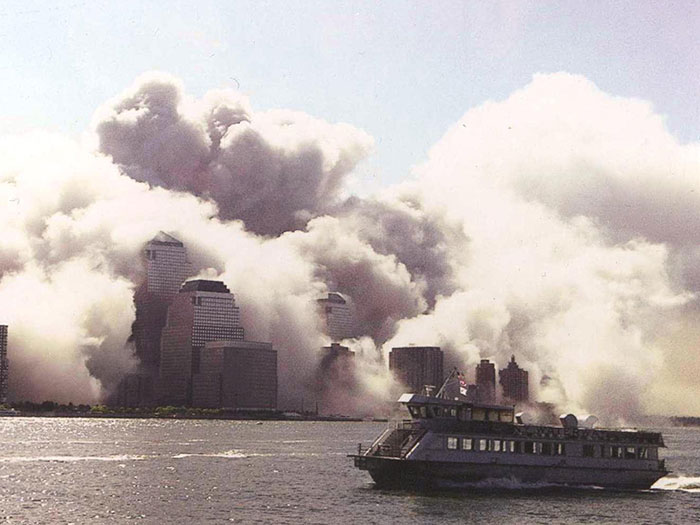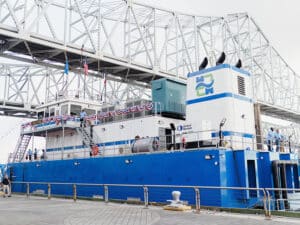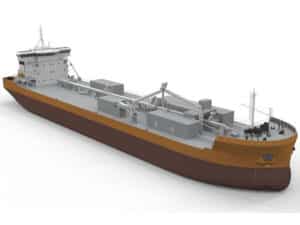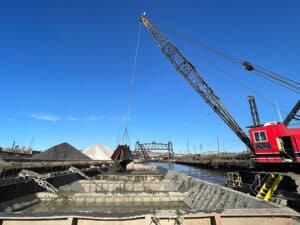
20 years later: NY Waterways looks back at rescue efforts on 9/11
Written by Heather Ervin
Image: New York Waterways
As people gathered on the New York Harbor waterfront in Manhattan to remember and honor the victims of the 9/11 attack on its 20th anniversary, many vessels from the “Great Boatlift” rescue conducted a boat procession in an event hosted by the American Maritime Partnership, New York Council of the Navy League, Transportation Institute, Towboat and Harbor Carriers Association, Passenger Vessel Association, Port Authority of NY/NJ, Sandy Hook Pilots, and Seaman’s Church Institute.
One company that made a significant impact on rescue efforts that day 20 years ago was NY Waterways, whose entire fleet—24 ferries at the time—were the first boats to respond to the 9/11 attack on the World Trade Center. These ferries were the largest single component in the waterborne evacuation of 500,000 people from Manhattan that day—the largest maritime evacuation in history.
Under the direction of founder Arthur Imperatore, NY Waterways’ crews had a high level of training and professionalism and already had conducted several rescues before 9/11.
Most important, these captains and deckhands adhered to the “Code of the Mariner,” to help whenever needed. They responded with no request or authorization from any government agency.
Speak to any NY Waterway crewmember who worked that day and the comment invariably is, “We just did what we are trained to do.”
“We deployed our assets immediately,” says Peter Johansen, senior director of marine operations, New York Waterway, who was conducting crowd control at the ferry terminal at the World Financial Center when the first plane struck. “We just wanted to help those who were trapped downtown.”
Because of their bow-loading design, NY Waterway’s ferries were pressed into service as waterborne ambulances. The vessels were used to medevac injured firefighters across the Hudson to Colgate. In all, NY Waterway ferries carried about 2,000 injured and taking a total of 158,506 evacuees to points in Jersey City, Hoboken and Weehawken, N.J., as well as Brooklyn and Queens. On a typical day, NY Waterway carries a total of 34,000.
“I was at the World Financial Center when Two World Trade Center collapsed,” says Johansen, “and the debris flew right past us. We had to keep moving up the seawall to continue loading people.”
Several ferries were on the scene in minutes. Within 30 minutes, the entire NY Waterway fleet was deployed in Lower Manhattan. The top management of the company, including Arthur Imperatore Jr., was on the scene to help supervise. Ferries used the two available slips at the World Trade Center Ferry Terminal. People climbed over the seawall railings into the ferries.
Several evacuees have said that just seeing the ferries at the seawall, especially when the dust clouds dissipated after the two towers collapsed, reassured people and prevented panic.
The shortest run was directly across the Hudson River to the Colgate Dock, where the large Colgate Clock stands in Jersey City. Other ferries went to the Hoboken Rail Ferry Terminal, the Erie Lackawanna Terminal.
At these sites, emergency personnel were waiting to assist.
Later in the day and into the night, ferries also carried military and law enforcement personnel from New Jersey back to Manhattan.
It wasn’t just ferries making up the maritime rescue on 9/11. Fireboats, fishing boats, tugboats and other craft joined the effort. Thousands of people also took Staten Island ferries.
Like the NY Waterway ferry crews, the crews of all these boats just did what they are trained to do on that day.
MARINE LOG REMEMBERS
Those of us at Marine Log’s then 345 Hudson Street offices had a horrifyingly close view of the day’s events, including the collapse of the World Trade Center towers. But we also had a close up view of the maritime industry’s response as evacuated New Yorkers who had no other way to get home except by the ferries excursion boats, tug and even private recreational boats that lost little time in forming a massive rescue flotilla.
Here’s what we posted on the Marine Log website a few days after the attack:
Marine Log’s 12th floor office windows give us a front row view of our industry at work on the Hudson River. Normally, it’s a peaceful view. But on September 11, it was a window onto the unthinkable as my Marine Log coworkers and I saw the destruction of Twin Towers of the World Trade Center, 20 short blocks to our south. But soon we could see a swarm of vessels—ferries, dinner boats, tugs and small private craft—shuttling thousands of evacuees across the Hudson River from downtown Manhattan to various points of safety in New Jersey. Larger vessels were also on station, including a Sandy Hook pilot boat, a Coast Guard cutter and a spill response vessel. The Coast Guard estimated that one million New Yorkers were evacuated from Manhattan by water.
The response by vessel operators was nothing short of phenomenal.
Ferries were there in 1989, when the Bay Bridge collapsed in San Francisco, following a devastating earthquake. Ten years later, they were in Ankara, Turkey, when that city was ravaged by a quake. And, now, on September 11, they were joining the rescue effort in New York City. Time and time again, ferries have proved to be a vital component of emergency response.
Among those rescued by ferries that day were eight weary, but grateful employees of Marine Log’s parent company Simmons Boardman Publishing.
“If there was a lesson to be learned,” says Johansen, “it is that port planners should look at what kind of assets they have in place for emergencies like this.”




